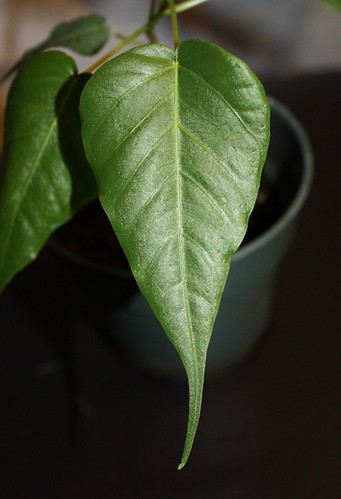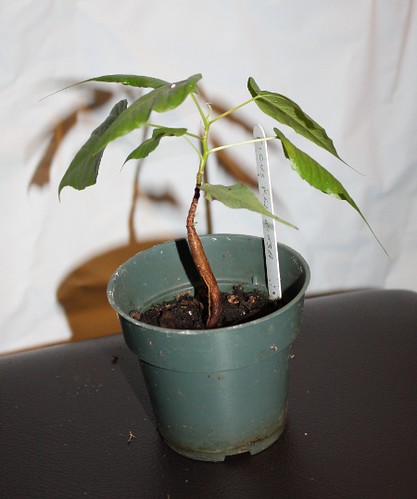As legend has it, the founder of the Buddhist faith, Siddhartha Gautama, gained his enlightenment after meditating for 49 days underneath a tree. That tree, for obvious reasons, has been sacred to the Buddhist faith ever since. In many ways it is equivalent to the cross on which Christ was crucified. Some old Christian churches claim to have pieces of the original cross and those pieces are considered holy relics.
The Bodhi tree is unique in that it is a living relic, so it continues to spread throughout the world over time. The Bodhi tree has been given many names including "Bo tree" and "pipal tree." These names are used in reference to the original tree, as well as all trees of that species. The Latin for this species is Ficus religiosa. It is a large Banyan, fig tree. The original tree was located in northeastern India, near the border with Nepal. Since then, the tree has been propagated to several different locations, resulting in a chain of highly-revered trees which have a tie to world history. One of the famous propagated trees is in the Foster Botanical Gardens in Honolulu, Hawaii. Christie and I visited that garden in May 2009 and saw the gigantic Buddha tree.
Recently the tree growing in the Foster Botanical Garden began to set seed. In Hawaii, this is worthy of concern, as the tree could become invasive, if the seedlings are not removed while they are small. My good friend, Leland, who has ties to the Foster Botanical Garden, obtained some of these seedlings and sent them to me.
The leaves of this tree are beautiful: cordate with an extended tip, giving them an unmistakable appearance.
The Bodhi tree is unique in that it is a living relic, so it continues to spread throughout the world over time. The Bodhi tree has been given many names including "Bo tree" and "pipal tree." These names are used in reference to the original tree, as well as all trees of that species. The Latin for this species is Ficus religiosa. It is a large Banyan, fig tree. The original tree was located in northeastern India, near the border with Nepal. Since then, the tree has been propagated to several different locations, resulting in a chain of highly-revered trees which have a tie to world history. One of the famous propagated trees is in the Foster Botanical Gardens in Honolulu, Hawaii. Christie and I visited that garden in May 2009 and saw the gigantic Buddha tree.
Recently the tree growing in the Foster Botanical Garden began to set seed. In Hawaii, this is worthy of concern, as the tree could become invasive, if the seedlings are not removed while they are small. My good friend, Leland, who has ties to the Foster Botanical Garden, obtained some of these seedlings and sent them to me.
 |
| Ficus religiosa leaf |
The leaves of this tree are beautiful: cordate with an extended tip, giving them an unmistakable appearance.
 |
| Ficus religiosa sapling |
Hmm....didn't know the story of this tree. How cool that you have one you are growing!
ReplyDeleteJealousssssssssssssss
ReplyDeleteI always liked the juperins the best, because they look the most like a miniature version of the regular sized trees. When done right, they look almost exactly like the twisted, wind-swept pines on the shores of Carmel and Monterrey, California.
ReplyDelete